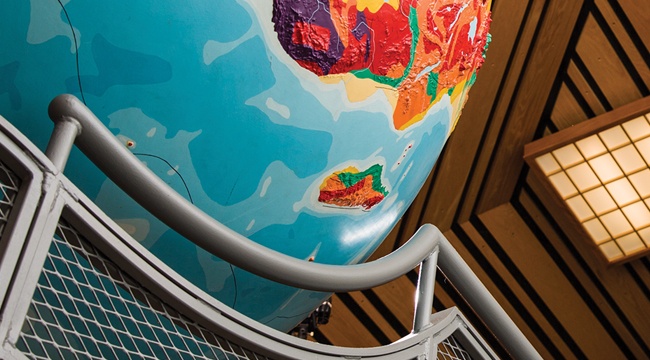Behind The Stacks
In the mid-’70s, a generous man made a substantial donation to build a study area for students interested in learning about some of the planet’s deepest, darkest secrets. Matched by the
province of Alberta, his financial contribution helped build a first-of-its-kind space, still heavily
used by students today.
Not only did the benefactor provide financial backing for the learning area, he also donated its most notable learning tool. That’s where we are today — staring at an object that was created in the U.K., shipped to Montreal and then made its way to Calgary. Others say it avoided Quebec altogether, arriving in Vancouver by way of the Panama Canal, and then made the trip east to Calgary. One thing we do know, however, is that, upon its arrival, the object was too big to fit through the doors, forcing construction workers to cut a hole in the wall in order to secure the item in its new home. That opening eventually became a window.
Looking through that window, only half of the space is viewable. The other half exists in the basement, hidden from passersby, and filled with intriguing relics from the past.
The lower level’s most notable item — a large piece of metal — was unearthed in the mid-’80s from the Canadian Arctic Archipelago. Though being of substantial value, the excavated material rests freely on display, taunting people to attempt a grab and go, knowing no mortal human could possibly get far with it in their clutches. This item, however, is not the basement’s only connection to the Canada’s northern polar region.
In 1975, with Quebec seeking sovereignty from the rest of Canada, the Arctic Institute of North America left McGill University in search of a more stable political climate. Resurfacing at the University of Calgary, the group accumulated a lot of research materials over the years, some of which can be found today, tucked away in a corner of the basement. While the lower level contains plenty of treasures in the way of books, today’s students also seek more hands-on, interactive ways to learn. Heading back upstairs, that is exactly what you will find.
When we look at that peculiar object that may or may not have come through the Panama Canal — where, exactly, are we? U












